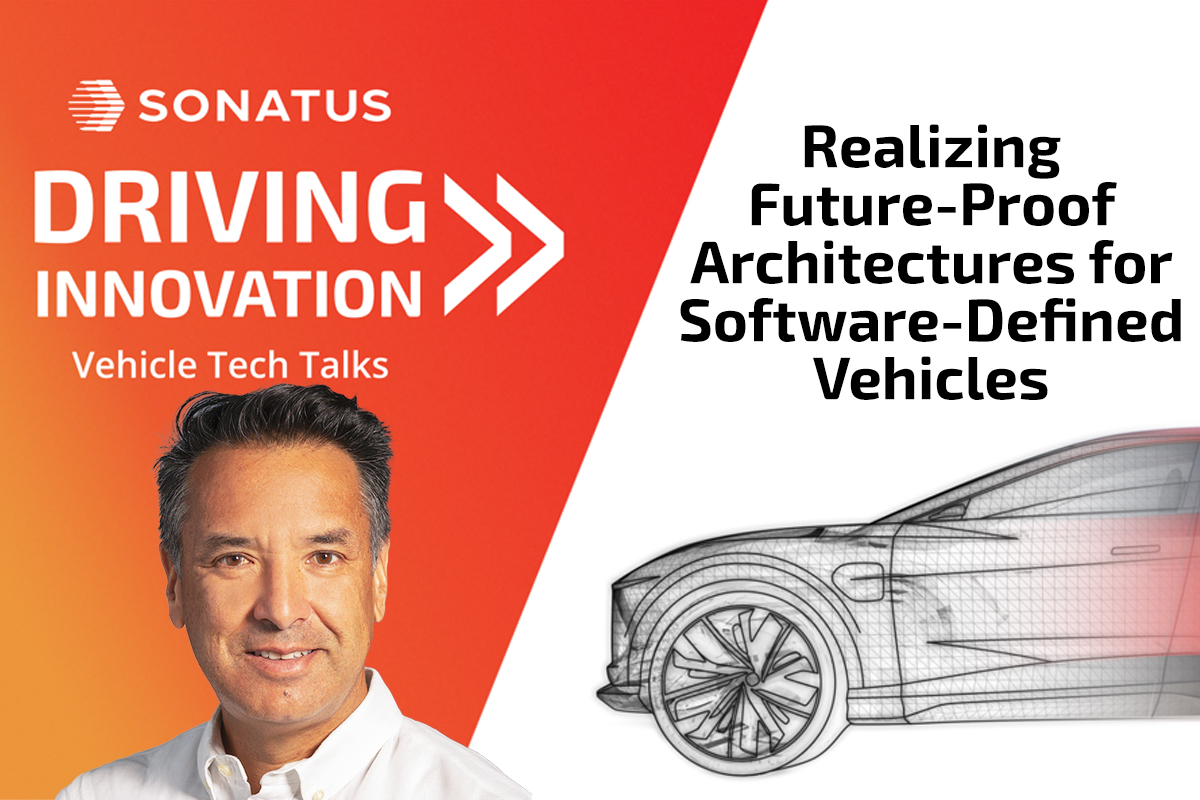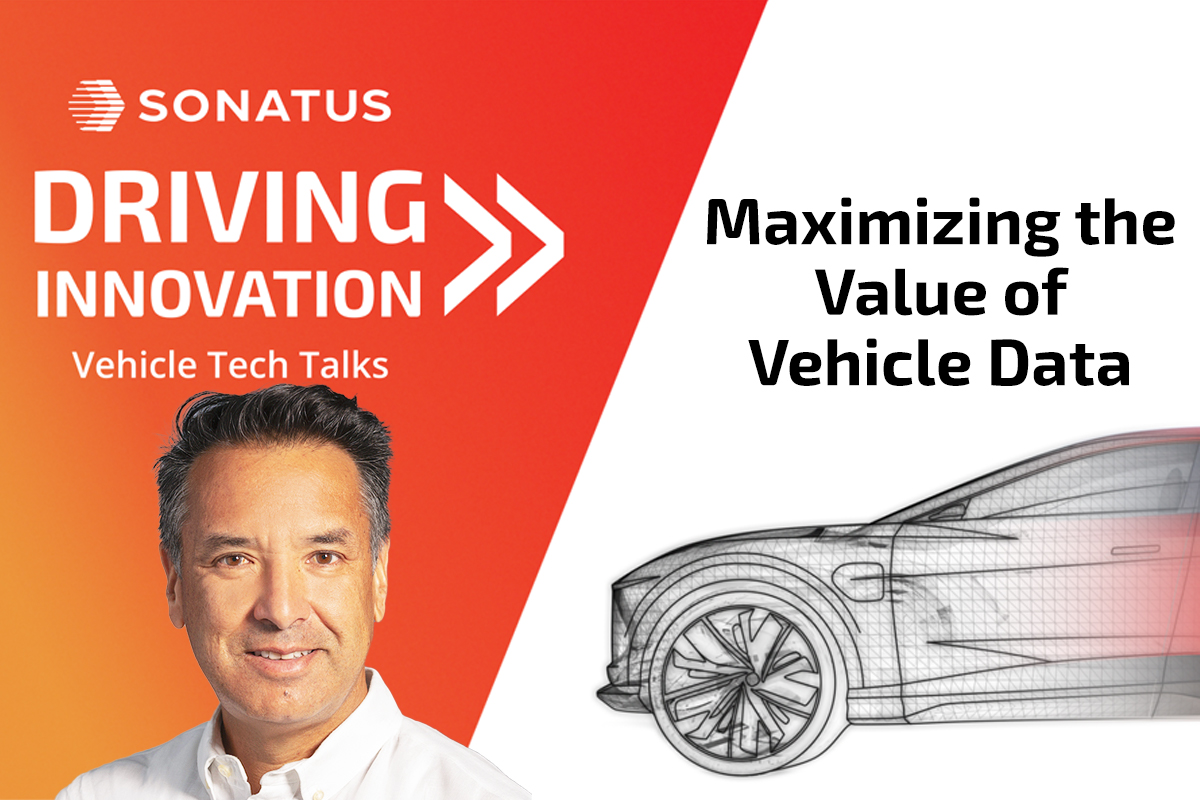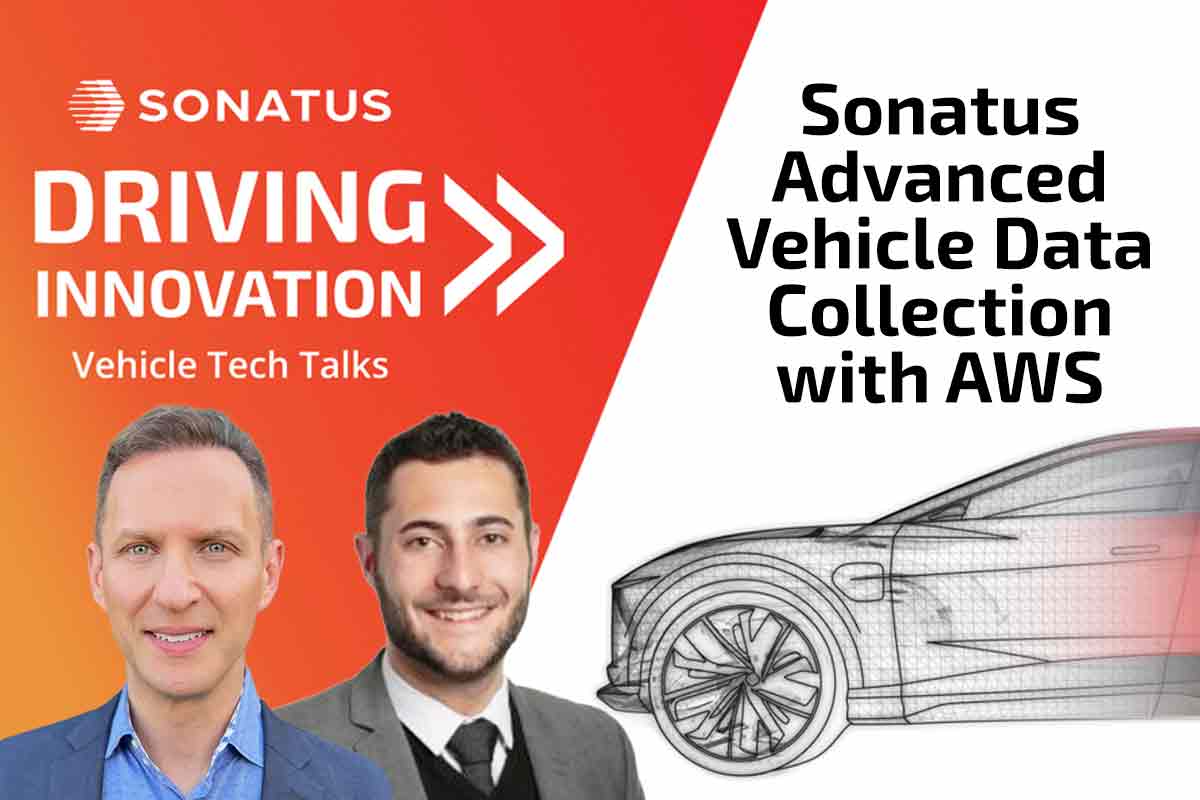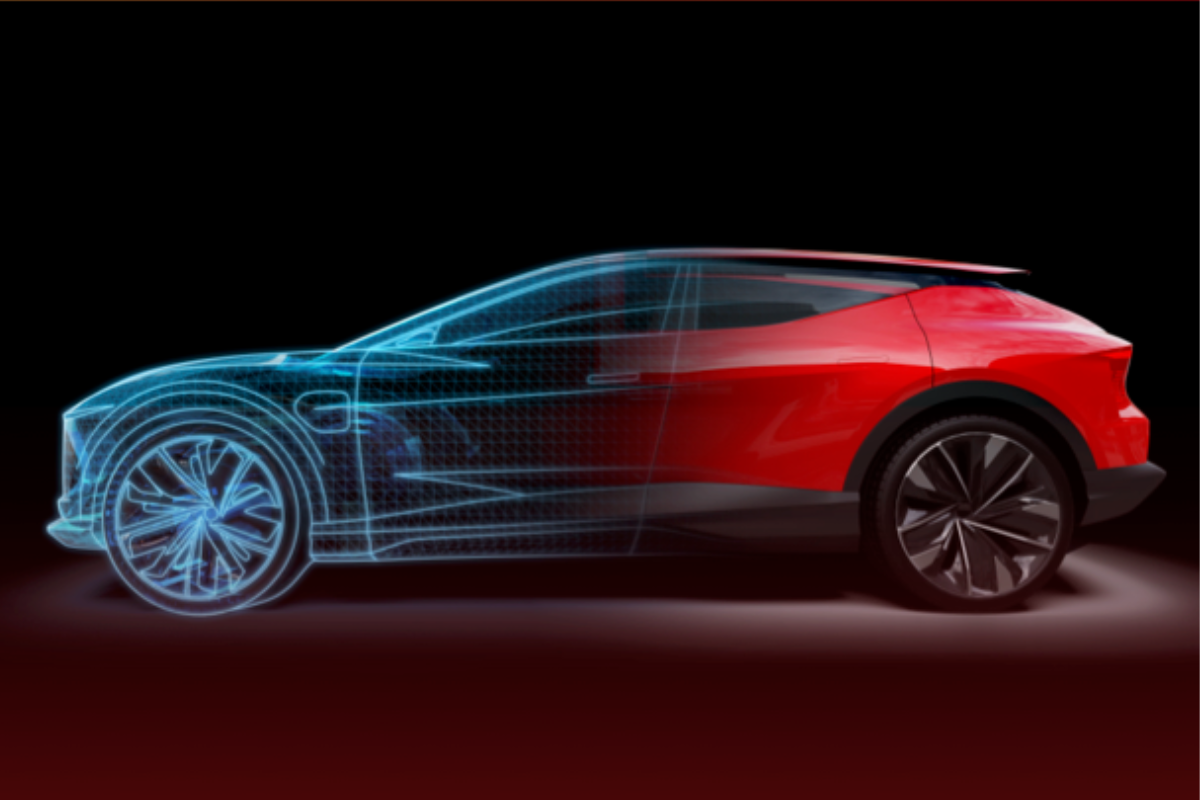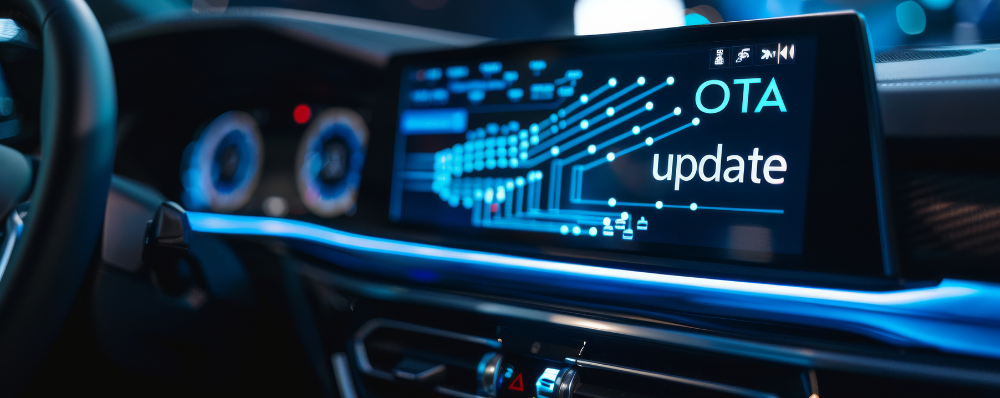Introduction to the episode
SANJAY: Welcome to another episode of Driving Innovation, a podcast where we talk about technologies and solutions that are enabling the auto industry to shift towards software defined vehicles. My name is Sanjay Khatri, Head of Product for Sonata’s. Sonatus recently published an e-book titled, “What OTA Update Solutions Must Deliver in the SDV Era.” The e-book explores how OTA updates solutions must evolve in this new era of software defined vehicles. In this episode, I will be discussing key topics from this e-book with my colleague, Jaime Alcantara.
OTA Industry background
SANJAY: According to the research from SBD Automotive, two out of every three vehicles sold in the US, China, and Europe are OTA capable. That’s 180 million vehicles. And by the end of this decade, that number will grow to half a billion vehicles. That means that OTA updates aren’t just a “nice to have,” they’re a necessity. Especially as cars become more software capable with a lot more functions that are digitally controlled and therefore software configurable.
And the automotive industry must move on from just updating the navigation maps, or the occasional bug fix, to being able to provide wholesale updates and upgrades of vehicle functionality to create entirely new driving and user experiences. And to discuss what this means for an OTA update solution. I’d like to bring in my colleague Jaime Alcantara, Senior Product Manager, who’s responsible for the Updater product. Jaime, welcome to the podcast.
JAIME: Yeah, thanks for having me, Sanjay.
SANJAY: Thanks. Good to have you back again.
JAIME: Yeah, it’s great being here.
SANJAY: Yeah. So as I mentioned in the introduction, the landscape is changing. Cars are more software capable. There’s going to be a lot more updates, maybe even monthly or weekly updates. And we’ve had OTA solutions for over a decade now. Why do we need yet another OTA solution?
Why a new approach to OTA is needed
JAIME: So you know, Sanjay, with the introduction of software defined vehicles, we’re also introducing new types of ECUs that weren’t there before. Now we’re talking about high powered computers as well as classic ECUs. These come with very complex and rich operating systems that give entry to new software assets. We’re not talking about firmware anymore. Now we’re talking about firmware, containers, hypervisors, applications, policies, configurations. So all that needs to be managed. And it needs to be managed very differently than how updates of the IVI or ADAS were managed a long time ago.
Single-pane-of-glass operations
SANJAY: So you’re now updating not just a few issues in the vehicle, but you know, the entire vehicle. You’re introducing new types of software, not just firmware. That sounds like a lot of complexity. So what does Updater do to help manage that complexity?
JAIME: You know, Updater provides users with a single pane of glass that allows them to manage these assets and any more to come in the future. So from Updater, you can trigger the update of the firmware of your classic IVI system, but you can also target the containers within it or the operating systems running on hypervisors in other high performance computers, such as the Body or the Central Gateway domains.
End-to-end traceability
SANJAY: Okay, so a single pane of glass– a single unified interface– to manage all types of ECUs, all types of software assets. What else does Updater provide in making sure the update processes are simpler?
JAIME: Yeah, that’s a good question. So Updater comes with a very important feature which is traceability. Right. When OEM engineers deploy an update, one of the biggest challenges they have is to troubleshoot if something goes wrong. So with Updater we’re bringing our traceability capabilities in, which means that it places very precise traceability IDs during the whole process of the update. All the way from the cloud to the vehicle to the individual ECUs and the processes involved in those ECUs. So that makes OEM engineers access, or it gives them access to a set of tools to troubleshoot and debug any potential bottlenecks or bugs and derive the issue much quicker.
Intelligent delta updates
SANJAY: So you’re talking about a single unified interface to manage all vehicle updates across multiple types of ECUs, MCUs, different types of software assets. I can certainly see how that reduces the complexity. What else does Updater provide to make the process a lot more efficient and reliable?
JAIME: Right at the beginning, you were talking that OEMs may start deploying updates on a monthly or even a weekly basis, right? If we think about that in the context of an IVI or an ADAS ECU update, we’re talking about a lot of gigabytes. We’re talking about like even dozens of gigabytes that could be deployed on a weekly basis. Obviously, no OEM wants to do that. The cellular cost would be increasing exponentially. So we have to think about intelligent ways to help OEMs reduce the footprint of those updates.
And that’s where delta updates comes into play. Now, delta updates is a way to minimize the footprint of those binaries. But the binaries have different natures. Sometimes we’re talking about full operating systems. Sometimes we’re talking about containers. So there are many different delta algorithms that we can employ that are optimized for those kind of assets. And what makes Updater special is that it knows, especially, what algorithm to apply to each of those assets in order to optimize the footprint of the whole update.
Cloud-native deployment and dry runs
SANJAY: In essence, we’re talking about some sort of intelligent compression, if you will, of the updates in order to minimize the package sizes that you’re updating. Both on the cellular as well as on the Wi-Fi networks.
JAIME: Exactly. Yeah.
SANJAY: I would also imagine that as there’s more and more software in the vehicle, software that is continuously updated. You also want to embrace some sort of a cloud native development and deployment pipeline all the way from the cloud to the vehicle. What does Updater provide for that?
JAIME: Right. So we’re watching also like all these trends in the automotive industry, and a very, important and remarkable trend right now, it’s the shift left in the V cycle. So what that means is that OEMs are trying to simulate and validate all their efforts in regards to the OTA update process before they actually deploy the update to the vehicles. So one way to do that is to actually deploy the update to our virtual vehicle fleet. And Updater supports that and allows you to coordinate any missing dependencies, flag out any vehicles that may fall off of that update, and catch that sooner. And not only that, but Updater also comes with dry run capabilities, we call it. And that’s a super cool feature because it actually allows you to see the impact of the update in terms of cost, bandwidth usage, locations being impacted and gives you a full report of the impact of your campaign before you actually deploy it. So it lets you tweak some settings of the campaign. For example, if you were to deploy a very huge update using a cellular network and then you see the cost, maybe you like to think about it twice and use Wi-Fi as a secondary channel.
Pre-emptive dependency management
SANJAY: I see, I see. It also sounds like you are able to prevent any sort of potential customer issues right up front when you’re doing this dry run in the cloud so that customers don’t end up with a bricked car, for example.
JAIME: Right. And the dry run actually takes our software dependency management into play, which means that every artifact, maybe depending on a specific hardware and software version, not only in that particular ECU but in the whole vehicle.
So as OEM engineers define those dependencies, what the dry run does is it’s going to run the simulation for every single vehicle that’s impacted on the fleet and see if any of those dependencies are met.
Cybersecurity compliance
JAIME: I see. Now, we haven’t talked about an elephant in the room, which is security. Obviously, as you’re having more connected vehicles, more software updates, it opens up the possibilities for malactors, malware, hacking, those sorts of things. What does Updater do on that front?
JAIME: So we are very aware of that. And especially the OTA pipeline is one of those mechanisms that you want to secure as much as possible against threatening actors. So in order to do that, we also want to support OEMs and their support of UN regulations such as UNECE155 and UNECE156. And in order to do so, we comply with all the international standards. We follow the Uptane security framework. We are compliant with ISO 24089 and ISO 21434, which allows us to provide all the evidence that OEMs need in order to comply with those regulations.
Summary and wrap-up
SANJAY: Got it. Then to summarize what we covered so far is the fact that the needs for OTA updates has changed dramatically since OEMs were first doing the updates. We’re doing a lot more frequent updates. Different types of assets. You want more predictability, you want more cost efficiency. And Updater provides a lot of the features and functionalities for that. I guess the audience would still ask: Why do we need yet another OTA solution? So what would be the answer to that?
JAIME: Yeah, that’s a great question. And I think, like, there are a lot of great solutions out there, but they have been there for a while and they need to incrementally update their systems in order to accommodate the SDV changing era. We’ve taken a different approach. We’re actually starting from scratch. From the ground up. Which allowed us to create a brand new tool that fully addresses the needs of SDVs..
SANJAY: I see, okay, that’s a good way to put it. So it’s sort of a purpose-built solution for the SDV era, as the title of the e-book suggests. Well thank you, Jaime. Thanks, this has been very informational. And, we look forward to having you back again on Driving Innovation.
JAIME: Thanks, Sanjay. It was a pleasure to be here. Thank you.
SANJAY: That wraps up this episode of the Driving Innovation Podcast. If you’d like to get some more details on the topics that we discussed today, I would urge you to download the ebook at Sonatus.com and stay tuned for more episodes of Driving Innovation, where we will continue to talk about technologies and solutions that are driving the industry forward toward software defined vehicles.
